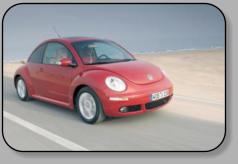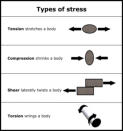FAQ > Urethane Adhesives
•
I
have
a
Volkswagen
Beetle,
when
I
called
Phoenix
Glass
for
a
price
on
a
new
OEM
replacement
windshield,
the
customer
service
representative
told
me
my
VW
called
for
the
application
of
a
different
type
of
adhesive
called
high
modulus
urethane.
I
understand
it's
a
form
of
urethane
but
how
does
it
differ from the type normally used?
The
short
answer
is
that
your
VW,
along
with
many
other
German
automobile
manufacturers,
such
as
Audi,
BMW,
Volvo
and
Mercedes,
have
mandated
a
rigidity
requirement
on
the
vehicles
that
they
produce.
In
order
to
meet
that
engineering
requirement
and
retain
the
structural
integrity
of
the
vehicle
it
is
necessary
to
use
a
different
type
of
urethane
to
bond
the
windshield,
back
glass
and
side
windows
to
the
vehicle.
High
Modulus
urethane
adhesives
provide
the
extra
strength
to
help
the
vehicle
resist
torsional
twisting
as
well
as
help
quiet
and
stabilize
the
vehicles
ride.
Another
added
plus
that
is
built
into
High
Modulus
Urethane
is
that
it
preserves
radio,
cell
phone,
and
global
positioning
system reception in an OEM antenna encapsulated windshield or rear back glass window.
The
long
answer
is
now
that
you
have
learned
how
important
it
is
and
how
it
all
works
together
we're
going
to
recap
a
bit
as
we
get
into
why
it's
so
important
to
not
only
make
sure
your
new
windshield
is
installed
with
a
High
Modulus
adhesive
but
with
the
"right
OEM
type"
of
High
Modulus
Urethane.
If
you
read
multiple
adhesive
manufacturers
literature
to
determine
whether
their
urethane
is
high
modulus,
you
will
find
different
definitions
of
the
term.
Some
manufacturers
define
their
windshield
adhesives
as
"modulus
enough"
or
"high
on
the
OEM
specification
for
high
modulus
classification,"
but
does
that
really
mean
that
they
can
be
classified
as
high
modulus
adhesives?
To
answer
that
question,
first
we
must
define
what
high
modulus
means.
High
modulus
is
a
rigidity
requirement
of
cured
adhesive.
It
measures
the
ability
of
the
adhesive
to
withstand
a
variety
of
stresses
and
still
return
to
its
original
form.
It
must
be
able
to
withstand
tension,
compression,
shear
and
torsion
without
adhesive
or
cohesive
failure.
High
performance
and
luxury
vehicle
manufacturers
specify
and
use
adhesives
like
BETASEAL
ONE
because
they
can
use
it
as
a
structural
element
to
stabilize
the
vehicle
which
improves
the
ride
and
reduces
rattles,
vibrations
and
other
vehicle
noises.
High
modulus
adhesives
have
a
much
higher
resistance
to
stress.
This
characteristic
enables
high
modulus
adhesives
to
stiffen
the
vehicle
body,
improving
handling
and
overall
stability
in
vehicles
designed
to
use
this
advanced
technology.
Vehicle
designers
place
greater
demands
on
high
modulus
adhesives.
The
adhesive
bears
much
more
of
the
pushes,
pulls
and
twists
associated
with
everyday
driving.
High
modulus
adhesives
must
have
a
higher
elastic
resistance
than
normal
so
they
will
not
deform
or
rupture
under
the
increased
stress.
So
how
do
adhesive
manufacturers
know
which
property
and
specification
should
be
met
in
order
to
be
high
modulus?
To
clarify,
it
must
be
understood
that
an
adhesive
is
either
high
modulus
or
it
is
not.
There
is no in between modulus that is good enough for all vehicles.
According to Mercedes specifications,
in order for an adhesive to be considered high modulus, it must meet
2.5 MPa.
Dow
Automotive's
Betaseal
One
Urethane
Adhesive
passes
the
defining
test
to
be
called
high
modulus
with
a
shear
strength
of
2.7
MPa
at full cure.
The Bottom Line
A
urethane
manufacturer
cannot
claim
to
be
"on
the
high
end
of
the
specification"
and
therefore
be
considered
"modulus
enough"
for
all
vehicles.
Any
urethane
manufacturer
claiming
to
be
high
modulus
should
be
able
to
provide
supporting
data,
to
include
laboratory
testing as well as technical data.
•
I’ve been reading your website about High Modulus Urethanes and it sounds like it would work better than the type
used in my GM Vehicle. If I have a new windshield installed wouldn’t it be better to use it.


It
does
sound
better
but
your
vehicle
isn’t
designed
for
it.
According
to
I-CAR,
Using
a
high
modulus
adhesive
when
it's
not
specified
or
when
it
was
not
designed
into
the
vehicle
could
alter
the
vehicle
by
making
it
stiffer
than
original
design
and
cause
other
potential
problems.

•
What is Urethane Adhesive?
Polyurethane
better
known
as
Urethane
is
an
adhesive
that
is
specially
made
for
sealing
and
bonding
a
windshield,
side
window,
quarter
glass,
and
rear
window
back
glass
in
the
automotive
industry.
Even
though
Europe
was
already
using
urethane
in
some
of
it’s
vehicles
the
first
reported
use
in
an
American
produced
car
was
in
a
1973
Oldsmobile
windshield
and
rear
back
glass
window.
In
1974
it
was
used
exclusively
in
all
General
Motors
as
well
as
American
Motors
vehicles.
In
later
years
GM
also
began
using
it
to
bond
rubber
gasket
set windshields in GMC and Chevrolet pick up trucks.
In
today’s
foreign
and
domestic
vehicles
urethane
is
the
only
adhesive
technology
used
in
high
performance
auto
glass
bonding
applications
because
urethane
is
capable
of
withstanding
high
levels
of
deformation
with
little
loss
of
adhesive
strength
and
performance.
Urethanes
are
tough
and
and
abrasion
resistant.
The
Betaseal
urethane
adhesives
we
use
here
at
Phoenix
Glass
are
formulated
to
be
durable enough to withstand long term weather exposure.

Copyright 2013 © Phoenix Glass, Inc. All Rights Reserved
Revised June 2023
Please Like Us
on Facebook














